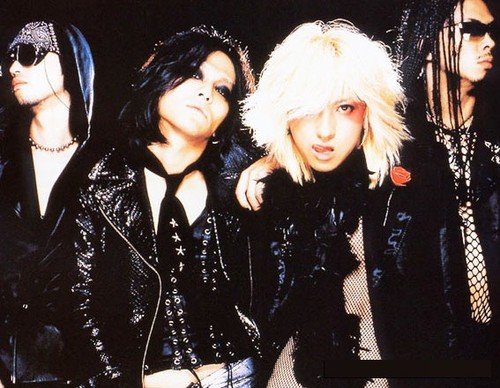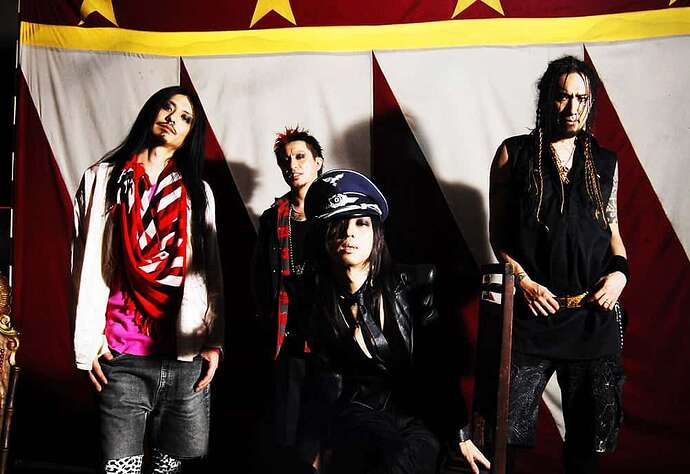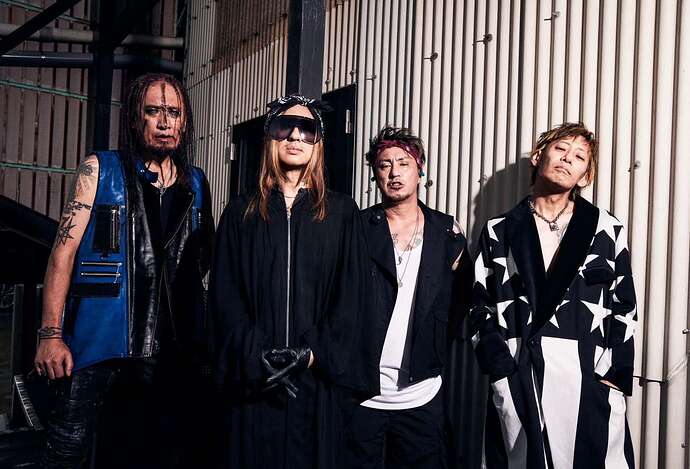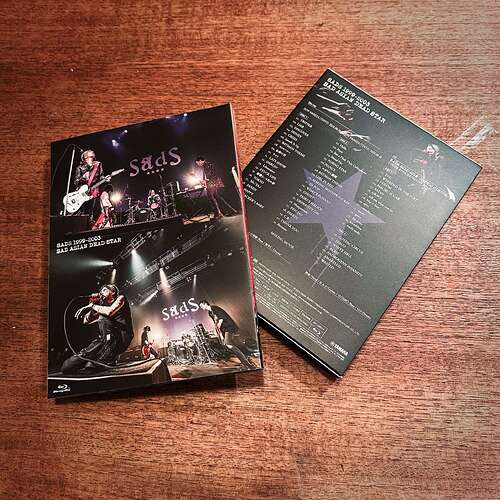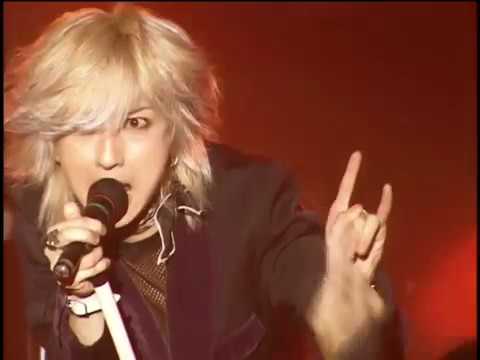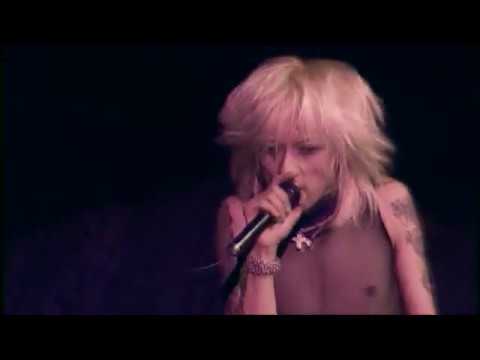In the Shadow of a Sleeping Dream
In 1999, SADS emerged like a sudden scream in the dark—a visceral, unrelenting reaction to the stagnant lull of Japan’s visual kei scene at the tail end of the millennium. Fronted by the magnetic and ever-evolving Kiyoharu, SADS was not a continuation of the past but a rejection of it. This band was born snarling, bloodied at the edges, pulling threads from punk, grunge, and the raw ferocity of American alt-metal. While Kiyoharu’s past haunted his image, SADS cut its own path, sonically and stylistically. Their debut album, Sad Blood Rock ‘n’ Roll, set the tone: aggressive, chaotic, and stripped of artifice. It was both declaration and detonation.
The Early Years (1999–2001)
The early incarnation of SADS was as raw as it was deliberate. With tracks like “Tokyo,” “SANDY,” and “Nudity,” the band captured an urgent, feral energy that stood in sharp contrast to the highly stylized, often melancholic aesthetics of other Japanese rock acts. Kiyoharu’s vocals were caustic and snarling—less about melody, more about attitude. Guitarist Taketomo Sakashita’s riffs roared like engines, and the band’s rhythm section delivered relentless forward motion. Their second album, BABYLON, only pushed harder, mixing glam, sleaze, and punk into a volatile cocktail. The look was leather, sweat, and smeared eyeliner. The sound was rage channeled into hooks. This was SADS unfiltered—explosive, combustible, and deeply alive.
Industrial Edge & Glam Flair (2002–2003)
As the new millennium deepened, SADS entered a period of sonic experimentation. With The Rose God Gave Me and 13, the band leaned harder into industrial and Western hard rock influences. The rawness of their early records began to congeal into something more structured, but no less aggressive. Their 2002 album, The Rose God Gave Me, fused Nine Inch Nails-style textures with gothic decadence. Kiyoharu’s charisma took on a darker, more theatrical tone, as the band adopted a more polished—but no less violent—edge. It was during this phase that SADS truly became an entity with international potential, playing with the aesthetics of American and British rock, but through a distinctly Japanese lens.
Another Kiyoharu Hiatus Rears Its Head (2003–2010)
In 2003, after releasing the introspective and haunting 13, SADS went dark. The silence was deafening. Fans were left with rumors and retrospectives, as Kiyoharu turned his attention to solo work and personal reinvention. But the ghost of SADS never quite faded. Unlike a formal disbandment, their absence felt more like a coiled spring—tense, uncertain, and waiting. This period, while inactive, became mythic. SADS had burned fast and hot, and their abrupt vanishing only amplified their cult status.
The Revival Years (2010–2014)
When SADS returned in 2010, it wasn’t a resurrection—it was a transformation. The lineup was new. The sound was heavier, denser, more refined. Albums like The 7 Deadly Sins and Lesson 2 showcased a band that had shed its skin yet again. Kiyoharu’s voice had evolved: still jagged, but now tempered by age and control. The new SADS leaned into metalcore, industrial metal, and post-grunge. It was no longer about raw rebellion; it was about enduring darkness, about scars that don’t fade. The music videos reflected this evolution—slick, cinematic, brooding. SADS was no longer a street fight. It was an execution.
Final Echoes and Quiet Dissolution (2014–2018)
SADS continued quietly through the mid-2010s, with scattered releases, tours, and a devoted fanbase that followed them through every metamorphosis. But by 2018, things had gone quiet again. No formal farewell. No closing curtain. Just a slow fade into shadow. Yet SADS was never a band built for permanence. It was a manifestation of a moment, a fever dream that shapeshifted with every breath Kiyoharu took. They didn’t end—they vanished, leaving behind a trail of distortion, eyeliner, and unrelenting noise.
Surprise Reunion (2024-???)
In 2024, SADS made a powerful return to the Japanese rock scene, reawakening the dark glamour and raw intensity that once defined them. Originally formed by Kiyoharu in the aftermath of Kuroyume’s disbandment, SADS had carved out a legacy in the early 2000s with their provocative fusion of glam, punk, and hard rock. Their revival brought a matured sound—still rooted in grit and sensuality, but now layered with atmospheric depth and emotional nuance. Kiyoharu’s haunting vocals remained the centerpiece, guiding a refreshed lineup through themes of beauty, decay, and isolation. The 2024 comeback wasn’t just a nostalgic gesture; it reasserted SADS as a vital force in Japanese rock, bridging generations with a sound that was both reverent of their past and fearless in its evolution.
Legacy and Influence
SADS’ place in the history of Japanese rock and visual kei is secure. As one of the most prominent bands to bridge the gap between gothic rock, grunge, and visual kei, SADS helped shape the direction of Japan’s alternative music scene in the ’90s and beyond. Their ability to blend elements of different rock genres while maintaining a distinct visual and musical identity has made them a touchstone for both fans and artists alike.
Kiyoharu’s influence extends beyond just the music of SADS; his androgynous, gothic fashion and emotionally raw performances played a critical role in solidifying visual kei as a genre that could be both musically diverse and emotionally resonant that inspired artists from LIPLICH, DIAURA, MEJIBRAY, Lycaon and Awoi to name a few that was reflected in the SADS Respect Album “M” in 2014. SADS’ approach to lyricism, often grappling with themes of loss, alienation, and existential questioning, resonated with a generation that was looking for a musical voice that reflected their own emotional complexities.
Albums
1. Sad Blood Rock ‘n’ Roll (1999)
2. Babylon (2000)
3. The Rose God Gave Me (2001)
4. Appetizing 4 Songs EP (2001)
5. Untitled (2002)
6. 13 (2003)
7. The 7 Deadly Sins 2010)
8. Lesson 2 EP (2010)
9. Erosion (2014)
10. Falling (2018)
Member History
Original Lineup (1999–2003)
Kiyoharu – Vocals
Taketomo Sakashita – Guitar
Masaru Kobayashi – Bass
Eiji Mitsuzono – Drums
Second Lineup / Revival Members (2010–2018)
Kiyoharu – Vocals
K-A-Z – Guitar
Yutaro – Bass
GO – Drums
2024 Reunion Lineup (2024-Present)
2024.06.29/30 (Original Lineup)
Kiyoharu - Vocals
Taketomo Sakashita - Guitar
Masaharu Kobayashi - Bass
Eiji Mitsuzono - Drums
2024.07.07 (Gothic Circus Era Lineup)
Kiyoharu - Vocals
K-A-Z -Guitar
Yutaro -Bass
GO - Drums
https://www.kiyoharu.tokyo
https://www.yamahamusic.co.jp/s/ymc/artist/279
https://x.com/sads_reunion


